Instant Pot Sushi Rice is perfect to make homemade sushi bowls, rolls or sushi bakes. Learn how to make this tasty and flavorful Japenese rice infused with sushi vinegar seasoning. No fail recipe!
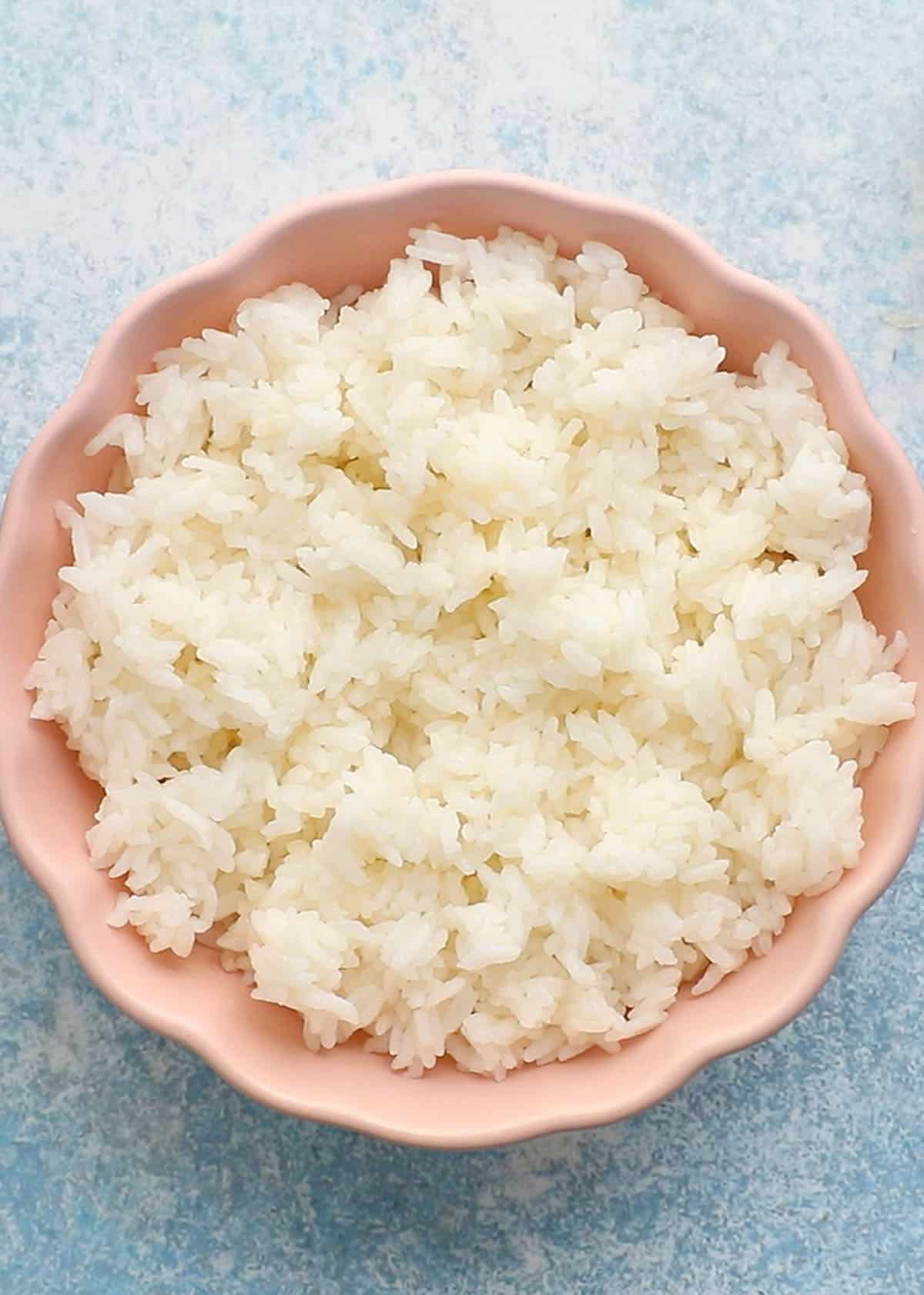
What is sushi rice? Sushi meshi, in Japanese, translates to sushi rice. It is made of steamed short-grain rice flavored with vinegar-based seasonings.
Its sticky texture helps to maintain the shape of sushi rolls, while the sweet, salty, and sour flavors of sushi vinegar complement the toppings and fillings.
Good sushi rice should look shiny, and the individual rice grains should stay fairly separate instead of sticking together. This is fundamental in making authentic sushi.
Authentic sushi rice can be easily made at home and can be used in homemade Japanese food recipes, such as sushi rolls, rice bowls, poke bowls, and onigiri, or as a side dish.
With this helpful article, step-by-step photos, and a video, I show you how to make the perfect rice at home, which turns out perfectly every single time!
The rice will turn out soft yet with a firm bite and sticky enough to use it for your favorite sushi recipe or these amazing sushi bowls.
Jump to:
Why you'll love it?
- 5 ingredients
- Quick & easy
- Foolproof
- Perfect balance of sweet, sour and salty
- Versatile for numerous applications
Ingredients
Scroll down to the recipe card below for full information on ingredients and amounts.
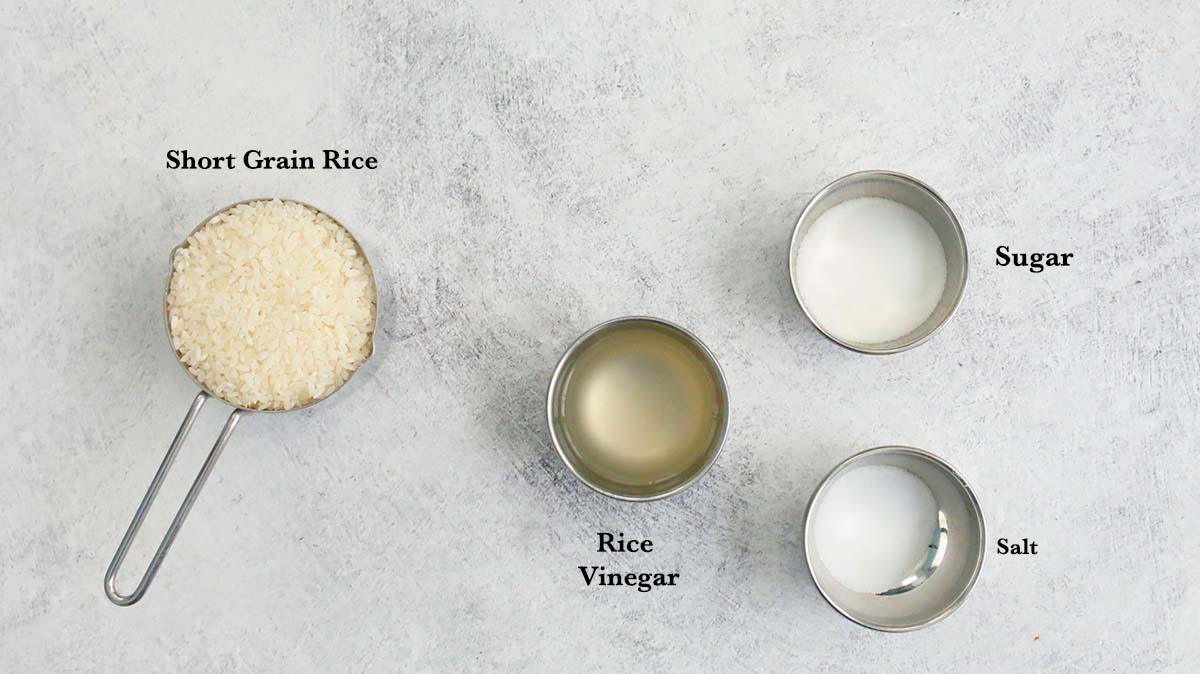
- Rice - The best rice for sushi is Japanese short grain rice. It is plump, sticky and firm textured that is essential in making a great sushi rice.
- Rice vinegar - Use unseasoned rice vinegar from the Asian store. .
- Sugar and salt - Granulated white sugar and fine sea or table salt to season the sushi vinegar.
Best Rice For Sushi
When shopping for sushi rice, look for short-grain rices that are either made in Japan or labeled as “sushi rice”. You can get it in your local grocery store within the Asian aisle or in a dedicated Asian shop.
Pro tip: My favorite brands are Tamaki Gold, Nishiki, Tamanishiki, Kokuho Rose or Lundberg, an organic Cailfornia brand.
💡 Other long-grain rice varieties, such as basmati or jasmine rice, are not suitable because they are too dry and not sticky enough to keep the sushi shape.Check out more rice recipes!
Sushi Vinegar Seasoning
Sushi rice is seasoned with sushi vinegar, which gives it a slightly sweet-sour aroma. Sushi vinegar is made of rice vinegar, sugar, and salt to achieve a balance of sweet, salty, and sour taste. It is heated in a saucepan or microwave to dissolve the sugar and then poured over the hot rice.
Although you can buy ready-to-use sushi vinegar bottles in almost all grocery stores, they usually include additives and never taste as good as the ones made at home.
When choosing rice vinegar, you want to avoid preseasoned or flavored vinegar because it might be too strong and alter the taste of your rice. I like to use Mizkan rice vinegar or Marukan rice vinegar.
How to make?
You can find full printable recipe below, but here is a quick overview of the procedure along with step-by-step photos.
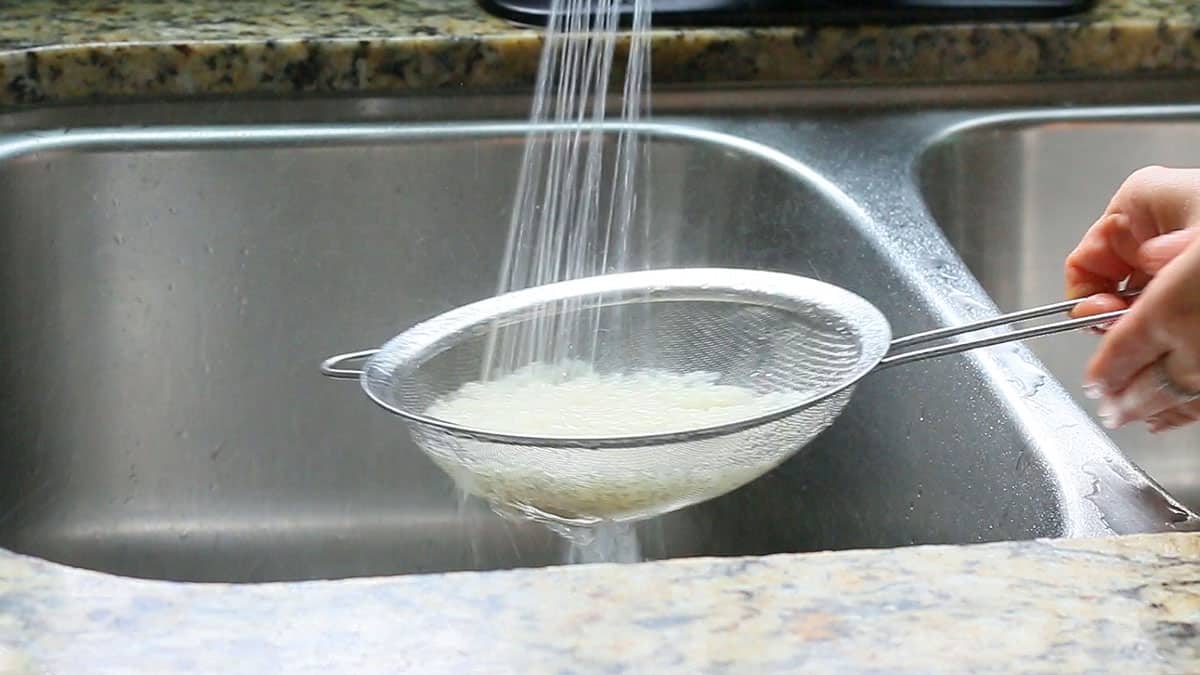
Step 1 - Rinse rice. Place the rice in a strainer and rinse it under running water for 1 to 2 minutes or until the water runs clear. Allow excess water to drain. To speed up this process, gently rotate the rice in a circular motion using your hand.
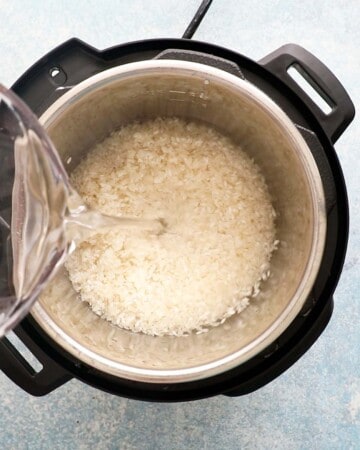
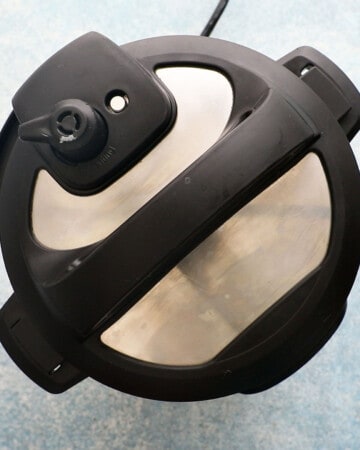
💡 The cook time is a total of about 18 minutes - 5 minutes for the instant pot to come to pressure and 13 minutes of actual cooking time.
Tip: Prepare the sushi vinegar during this cooking time.
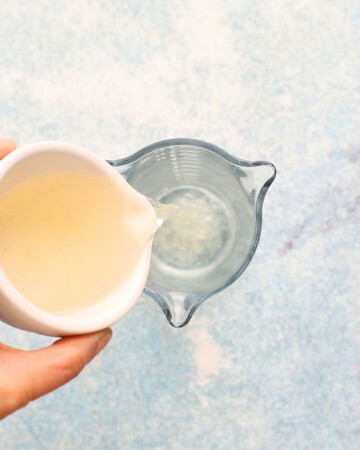
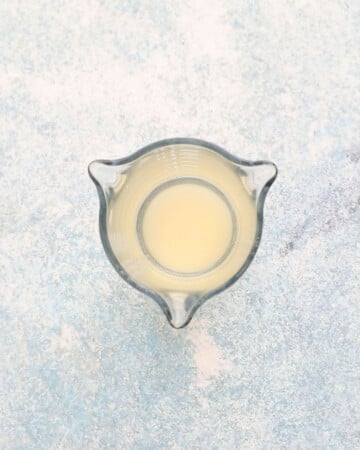
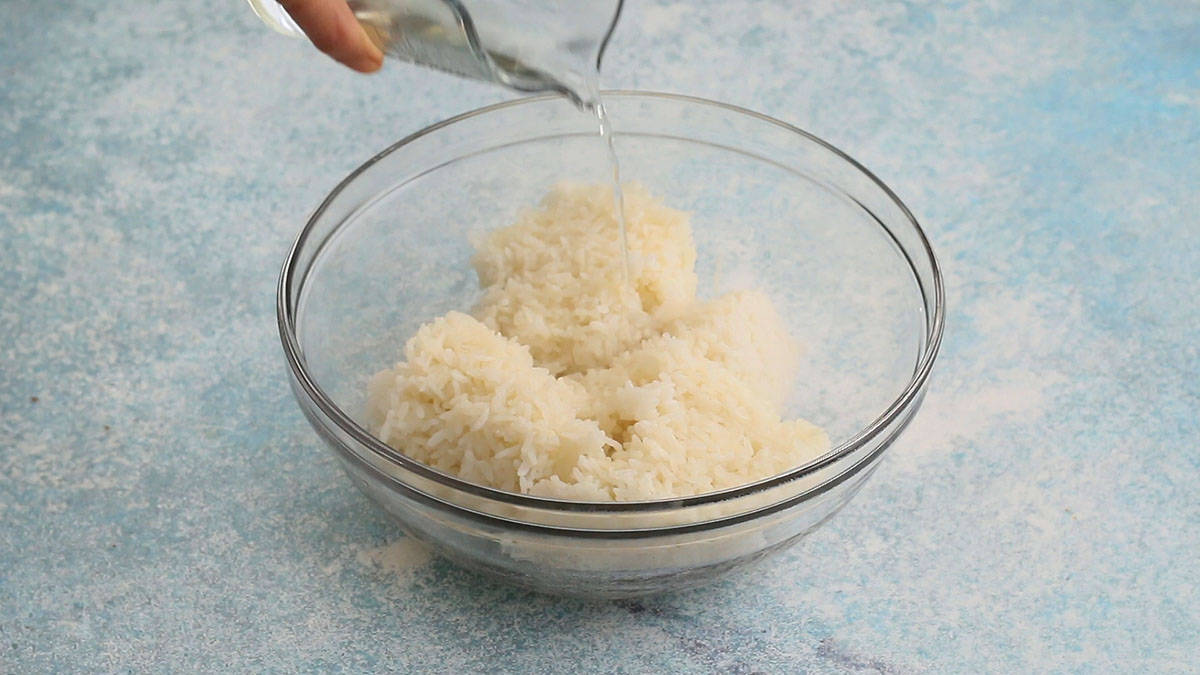
Step 6 - Transfer rice to a separate glass bowl and drizzle it evenly with the homemade sushi vinegar.
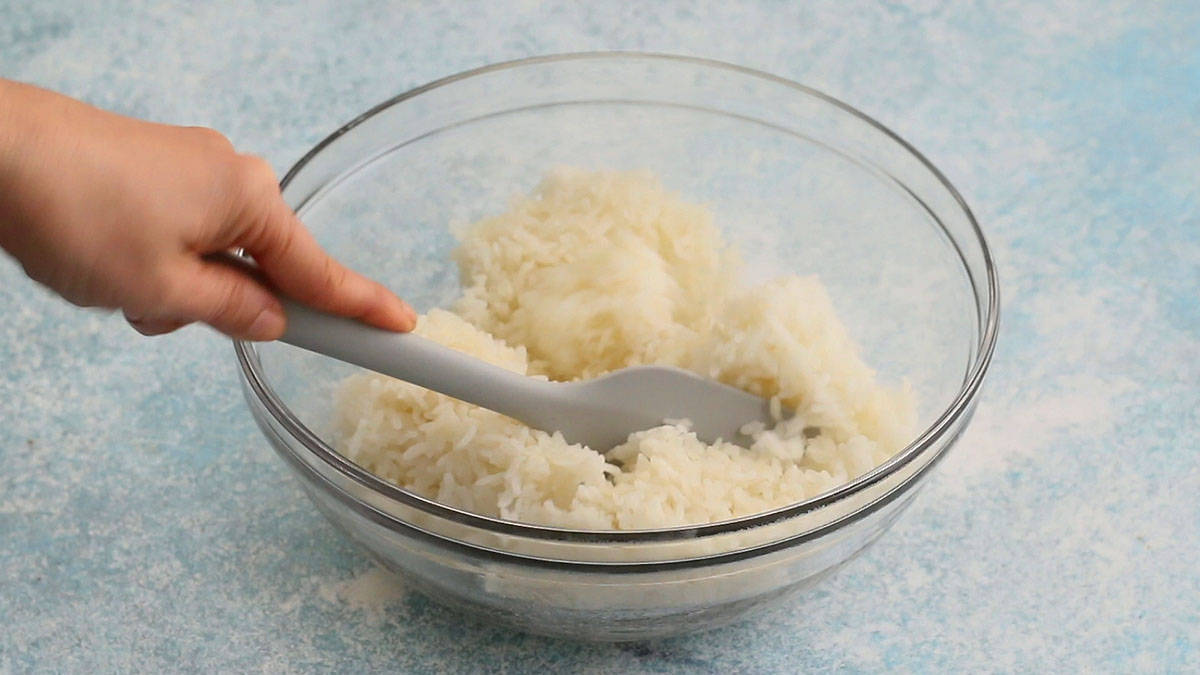
Step 7 - Using a wooden spoon or a rubber spatula, gently fold the rice into the mixture, using a cutting, lifting, and folding motion to incorporate it evenly.
Pro tip: Use a rice paddle or wooden spoon to combine the rice and seasoning. Stay clear of metal spoons and bowls, as they may react with the vinegar.
Tips to avoid mushy sushi rice
- Use good quality Japanese short-grain rice and not long grain varieties such as Jasmine or basmati rice. They are readily available in local Asian grocery stores and on Amazon.
- Ensure the rice is hot when mixing the sushi vinegar to achieve a glossy finish.
- Over stirring or pressing while mixing the vinegar can result in mushy rice. Instead, use a 'cutting' technique by gently folding the vinegar into the rice using a spatula.
- Cover the rice with a wet kitchen cloth to prevent the rice from drying.
Want To Save This Recipe?
Ways to serve
Your perfectly fluffy homemade instant pot sushi rice is ready to be made into traditional sushi rolls, bowls, salads, cups or sushi bakes or even crispy rice cakes.
Tip: If you are making sushi rolls, keep the cooked rice covered with a kitchen towel to prevent it from drying till the rice is cooled to room temperature.
Storage and reheating
Sushi rice tends to get hard when refrigerated and might not be best option for making sushi rolls. However, leftover rice can be used to make rice bowls, cakes, sushi bakes or other easy sushi recipes.
You can keep it at room temperature for up to six hours before eating it or using it in your favorite recipe. Leftovers can be refrigerated for up to 3 days.
💡 Freezing sushi rice - Upon thawing, the rice tends to lose its texture and become mushy. Therefore, we advise against freezing it.
Helpful tips
- Rinse until the water runs clear. This is essential in removing the excess starch.
- Make sure that sugar is completely dissolved in the sushi vinegar.
- Customize seasoning - Feel free to adjust the quantity of rice vinegar, sugar and salt to your taste.
- Do not use a metal spoon or bowl. Use only a glass bowl, wooden spoon, or rubber spatula since vinegar might react to metal and affect the taste.
Recipe FAQs
Traditionally, sushi rice is soaked for 30 minutes to an hour after rinsing. This soaking process allows the grains to absorb water gradually, ensuring they cook evenly and yield a sticky yet firm texture. However, the pressure cooker or instant pot method perfectly cooks rice without soaking, making it ideal for quick and easy meals.
Yes, rinsing helps to remove excess starch from the surface of the rice grains, which can cause the rice to become overly sticky or gummy when cooked.
Sushi rice tends to have a higher starch content than basmati or jasmine rice. So, a quick rinse might be enough for instant pot rice pudding; a thorough rinse is recommended.
Once the rice has been rinsed, it's important to drain it well before cooking to ensure the proper water ratio is used in the pressure cooking process.
Sushi rice is made using Japanese short-grain rice, primarily because it has a sticky texture when cooked, which helps it hold together well when rolled into sushi or shaped into nigiri. On the other hand, long-grain varieties like basmati and jasmine rice have a fluffy texture when cooked and the grains do not stick together and remain separate. Therefore, it is better to use only the short-grain rice variety.
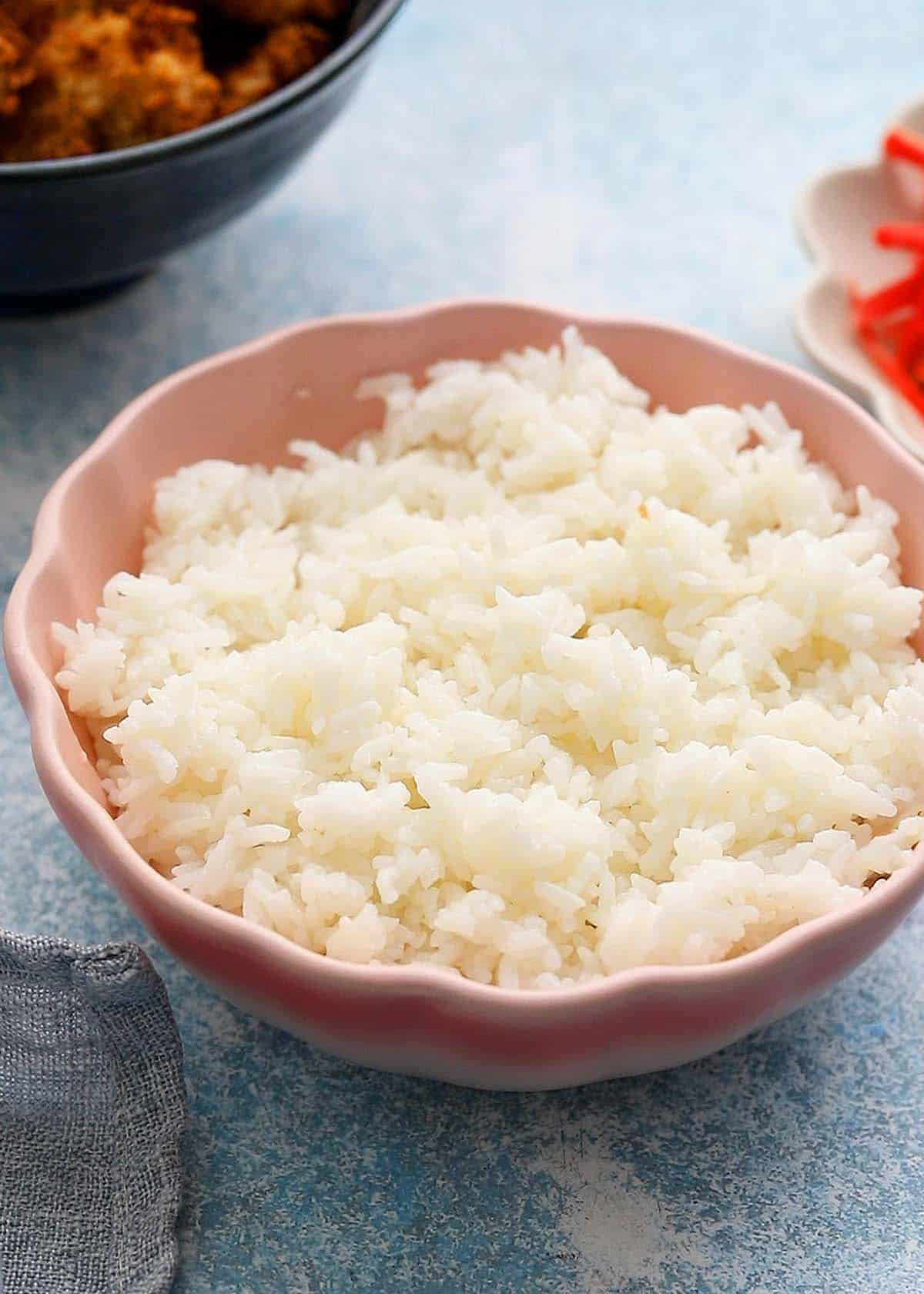
More Asian recipes

Instant Pot Sushi Rice
Equipment
Ingredients
- 2 cups short grain Japanese rice
- 2 cups water
- ¼ cup rice vinegar
- 2 tablespoons white sugar
- 1 teaspoon salt
Instructions
- Place rice in a fine mesh strainer, rinse under running water for 2 minutes or until water runs clear. Let drain well.
- Add rice and water into the stainless steel insert and place in the instant pot. Close and lock lid, making sure that valve is in sealing position.
- Pressure cook at high pressure for 3 minutes, then natural release for 10 minutes. Turn Venting Knob to Venting position to release the remaining pressure. Open the lid.
- While the rice is cooking, prepare the sushi vinegar. Combine rice vinegar, sugar, and salt in a medium glass bowl. Microwave the mixture for about 30 seconds until it's hot, but be careful not to let it boil. Stir until the sugar is completely dissolved, then set it aside.
- Transfer rice to a seperate glass bowl and drizzle the sushi vinegar evenly on top. Using a wooden spoon or a rubber spatula, gently fold the rice, using a cutting, lifting, and folding motion to incorporate it evenly.Tip: If you are making sushi rolls, keep the prepared rice covered with a kitchen towel to prevent it from drying till it has cooled to room temperature.
Notes
Nutrition
Nutritional information, based on third-party calculations, should be seen as estimates, not guarantees, as various factors like product types, brands, processing methods, and more can alter the nutritional content in recipes.
Some of the links above are affiliate links, which pay me a small commission for my referral at no extra cost to you! I am a participant in the Amazon Services LLC Associates Program, an affiliate advertising program designed to provide a means for us to earn fees by linking to Amazon.com and affiliated sites. Thank you for supporting kitchenathoskins.com
All contents and images are my original work, unless and otherwise mentioned. Please do not use my recipes or images without linking back to www.kitchenathoskins.com. If you wish to republish a recipe, please rewrite in your own words and don’t forget to include a link back to the original recipe.






Leave a Reply